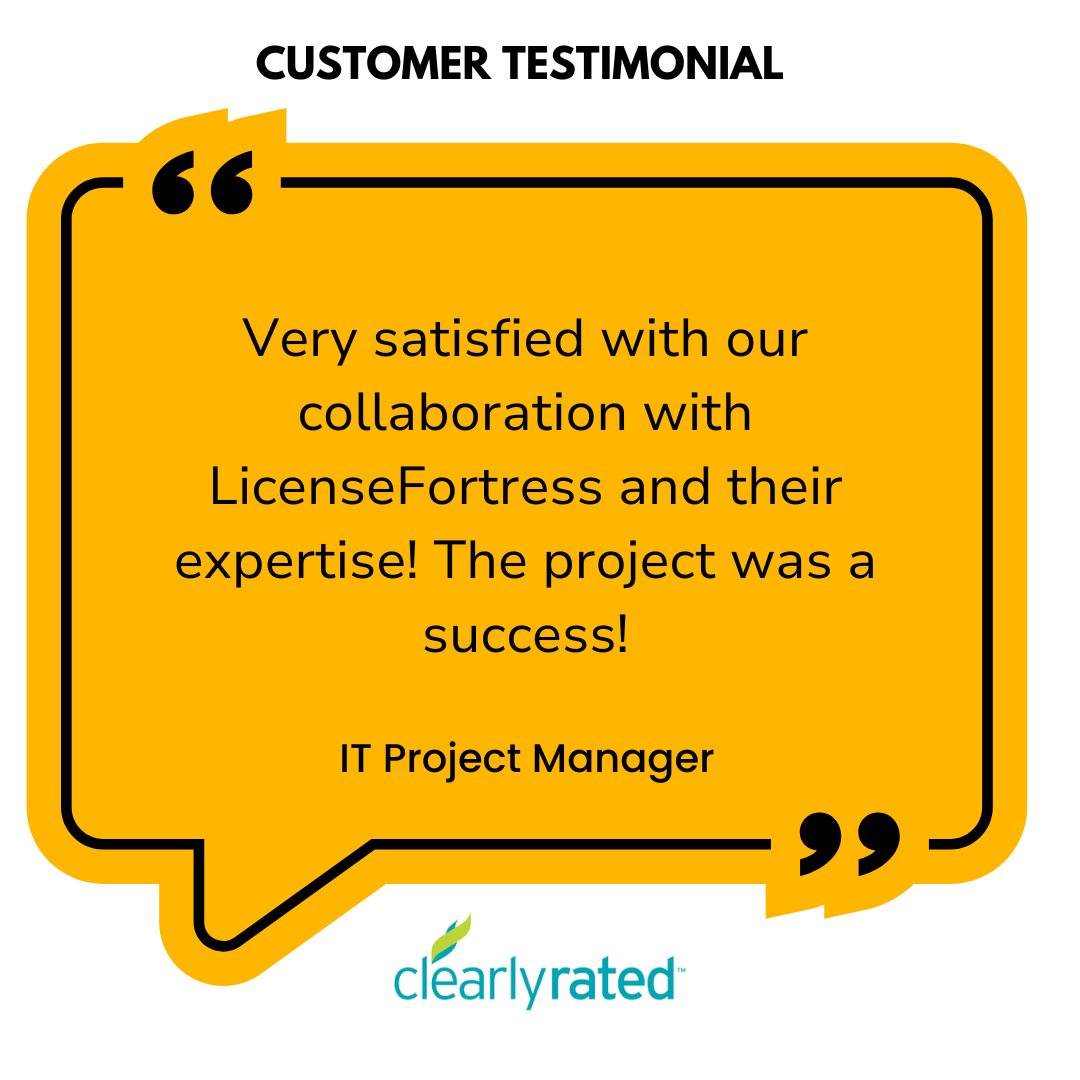Executive Summary
A referral from a partner led a prominent EU service provider to seek help from LicenseFortress to address its high costs and complexity in managing Oracle Exadata systems. The company faced an annual disaster recovery (DR) expense of $250,000 and confusion over Oracle’s licensing policies. By transitioning to VMware on Dell for production and Azure for DR, they reduced costs to $25,000 annually saving the company $225,000 per year while ensuring compliance, ultimately achieving substantial savings and a more efficient, scalable IT infrastructure.
$10K
Project Cost
$225K
Annual Savings
2,150%
ROI
Challenges
The company faced a primary challenge of maintaining their disaster recovery environment at a high cost of approximately $250,000 annually. Additionally, confusion around Oracle’s policies, particularly the soft partitioning policy for VMware environments and the authorized cloud licensing policy for AWS and Azure, compounded their difficulties.
1. Soft Partitioning Policy for VMware Environments
This policy outlines how Oracle licenses its software in virtualized environments. Historically, Oracle has required licensing for all physical processor cores in a server if any Oracle software runs on a virtual machine within that server. For VMware, Oracle mandates that any server running VMware must be licensed, as Oracle workloads could potentially run on it. This approach, often called “soft partitioning,” ignores virtual boundaries and focuses solely on the physical hardware.
2. Authorized Cloud Licensing Policy for AWS and Azure
This policy defines how to license Oracle software when deploying it on authorized public cloud platforms, specifically AWS (Amazon Web Services) and Microsoft Azure. Oracle recognizes these platforms as authorized environments for their software, establishing specific licensing rules and considerations for deploying Oracle software in these cloud services. The policy details how to count and manage licenses in these environments.
Solution
In partnership with LicenseFortress, the company embarked on a strategic overhaul of their IT infrastructure to reduce their licensing overhead.
1. Migration to VMware on Dell
Transitioning their production environment to VMware on Dell hardware, they sought a more flexible and cost-effective solution than their existing Oracle Exadata setup.
2. Disaster Recovery in Azure
The non-production environment, used for DR, was migrated to Azure. This move, facilitated by LicenseFortress, leveraged Azure’s scalability and flexibility, enabling the company to maintain a minimal DR environment during normal operations. Azure’s backup and disaster recovery solutions are known for their simplicity, high availability, and resilience.
Results
In the realm of modern IT infrastructure, the implementation of effective and efficient disaster recovery (DR) solutions is paramount for ensuring business continuity and operational resilience. This section delves into the transformative impact of adopting Azure for disaster recovery, highlighting four key areas of improvement.
1. Significant Cost Reduction
With Azure, the DR costs dramatically decreased to approximately $25,000 annually.
2. Enhanced Flexibility and Scalability
The DR environment in Azure managed minimally during normal operations, could dynamically scale in response to disasters, ensuring business continuity without the burden of overpaying.
3. Clarity on Oracle Policies
LicenseFortress helped the company resolve confusion around Oracle’s policies, aligning their operations with compliance requirements.
This strategic shift, spearheaded by LicenseFortress, not only resulted in significant cost savings but also equipped the company with a flexible, scalable, and compliant IT infrastructure. The integration of Azure for disaster recovery was instrumental in achieving these operational efficiencies and cost reductions. Recognizing the value of expert guidance, the company became an ArxSecure customer to further enhance its IT management.
Want to Optimize Your Cloud Licensing and Cut Costs?
LicenseFortress provides tailored solutions to reduce your disaster recovery and licensing expenses. Our expert team will guide you through optimizing your cloud environment, ensuring you fully leverage your existing licenses while cutting costs by up to 90%.


